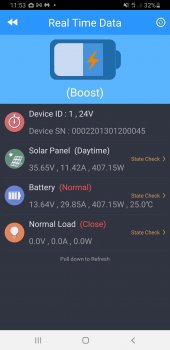Looks to be a pure-lead agm. That's a good choice for your location, since the lower internal resistance of pure-lead has a better charge acceptance rate and can charge faster. On discharge, a pure-lead agm also holds its voltage higher under heavy load.
Normally a "conventional agm" made of recycled lead has higher internal impedance, and as such can't be charged any faster than about 0.25C. But pure-lead can surpass this rate easily.
Pure-lead can easily handle 0.5C easily, which would be ideal under cloudy / intermittent sunshine climates such as the UK. Sooo ... that 130ah pure-lead could handle 65A easily - meaning for a nominal 12v panel, that would mean you could run a 1KW panel.

So don't be afraid to run with a large array if you have the space and means for it.
But by all means ask the dealer if indeed 0.5C charge rate is possible with that battery - else they may be playing word-games with "Pure Primary Lead". But after looking at their recommendations for AGM charge and care, they appear to be legit. Maybe next time I cross the pond I'll have to visit them.

I've always recommended to those in the UK that want to run lead-acid to run pure-lead agm to take advantage of this when the sun does actually peek out from the clouds - allows you to nab a lot of current while you have it available if you have the panel power available.
My long-winded way of saying looks ok to me...



